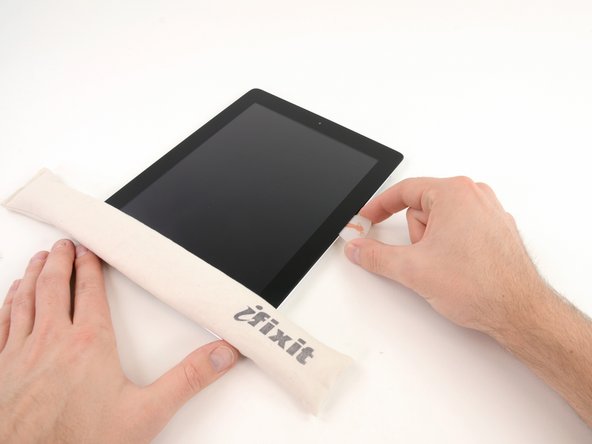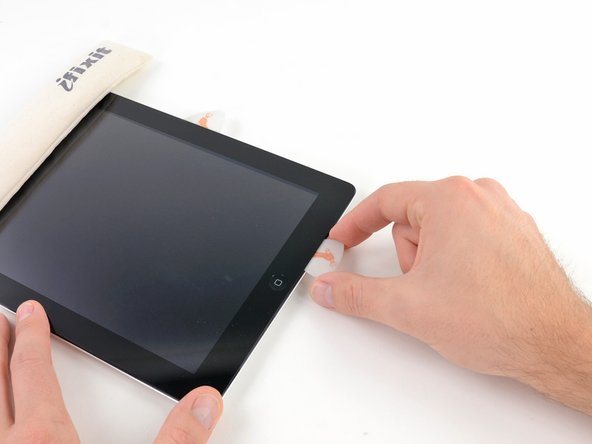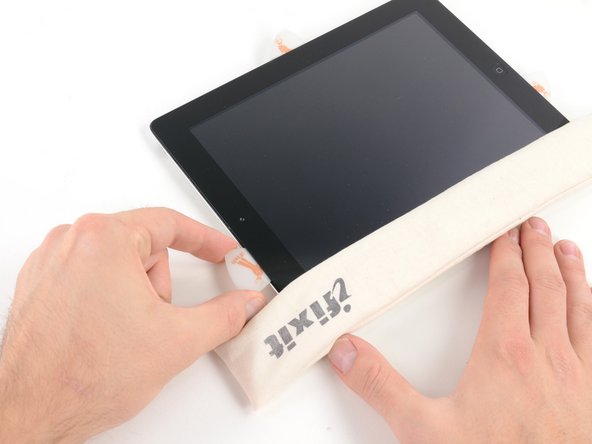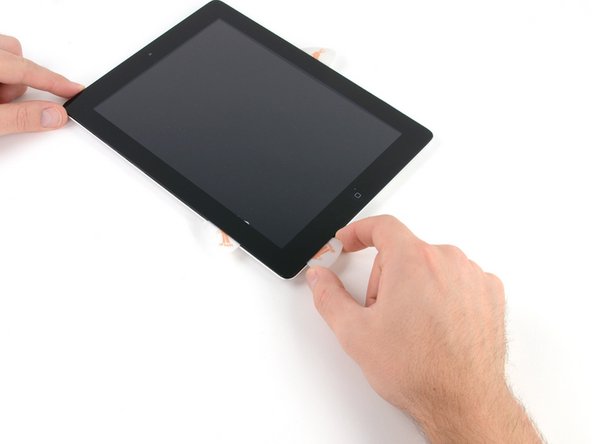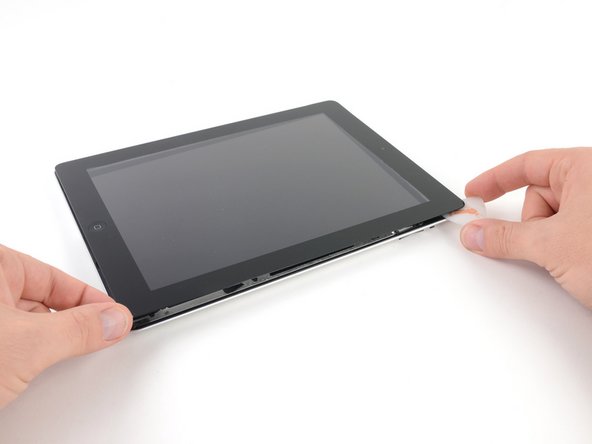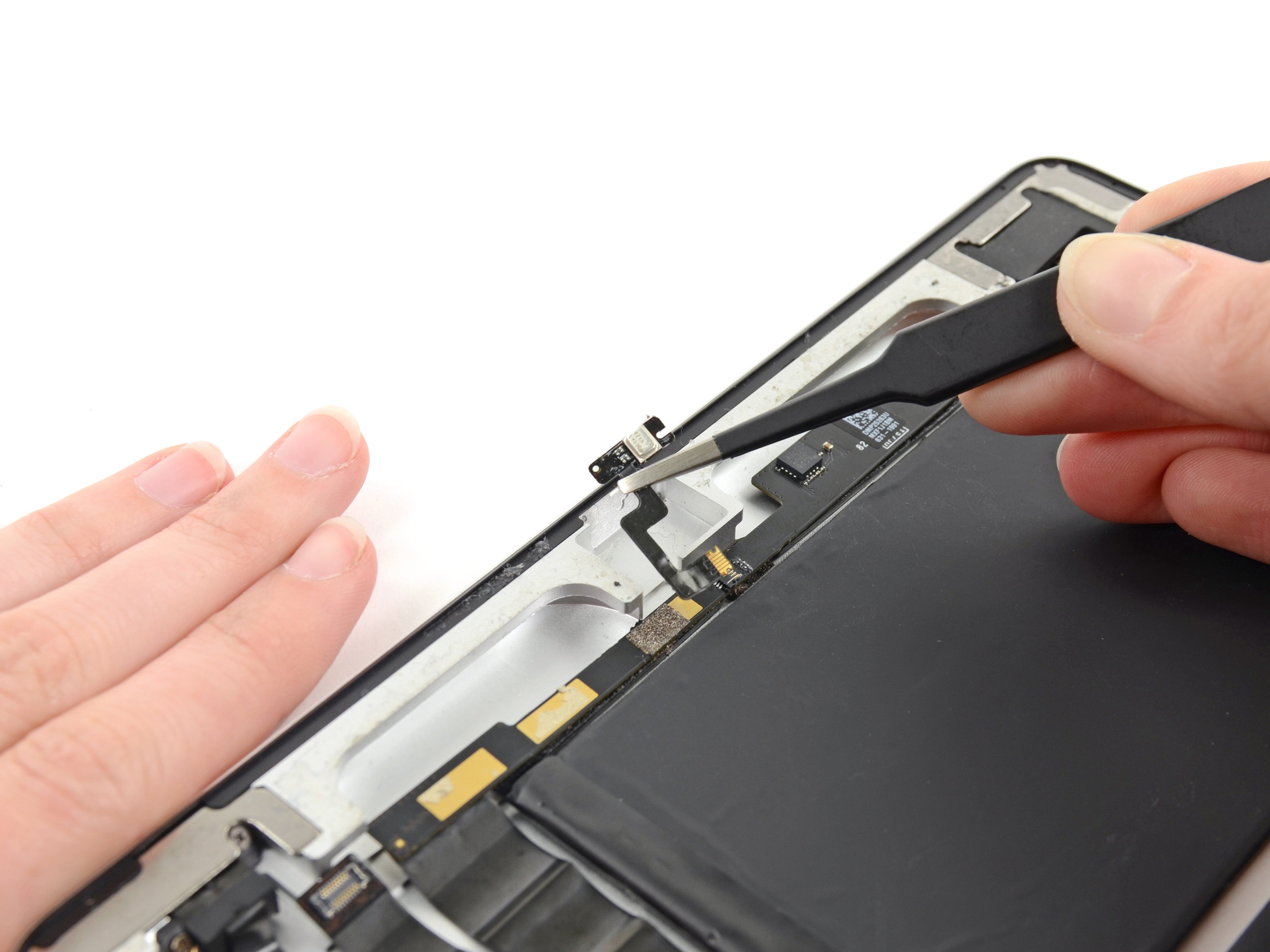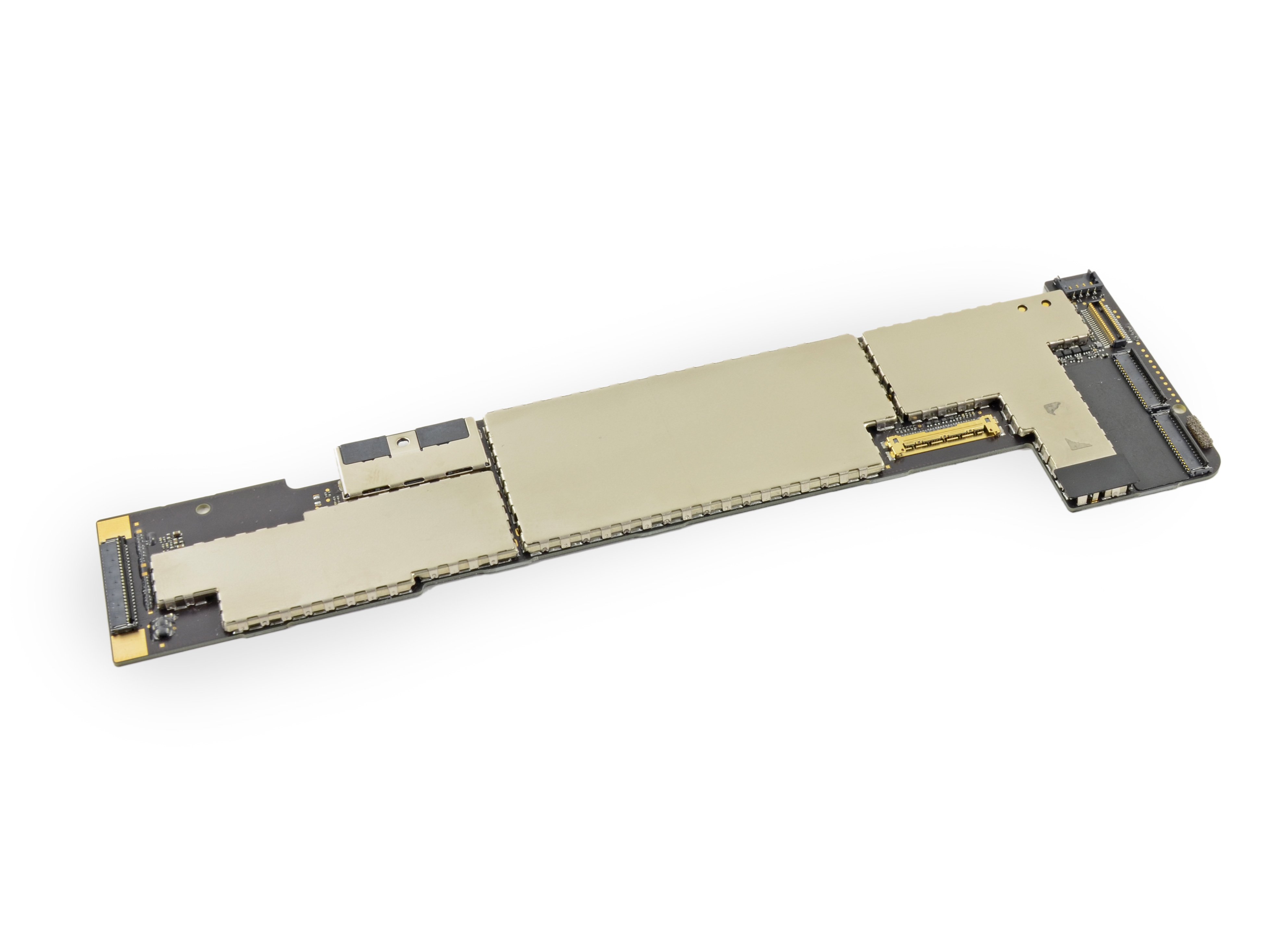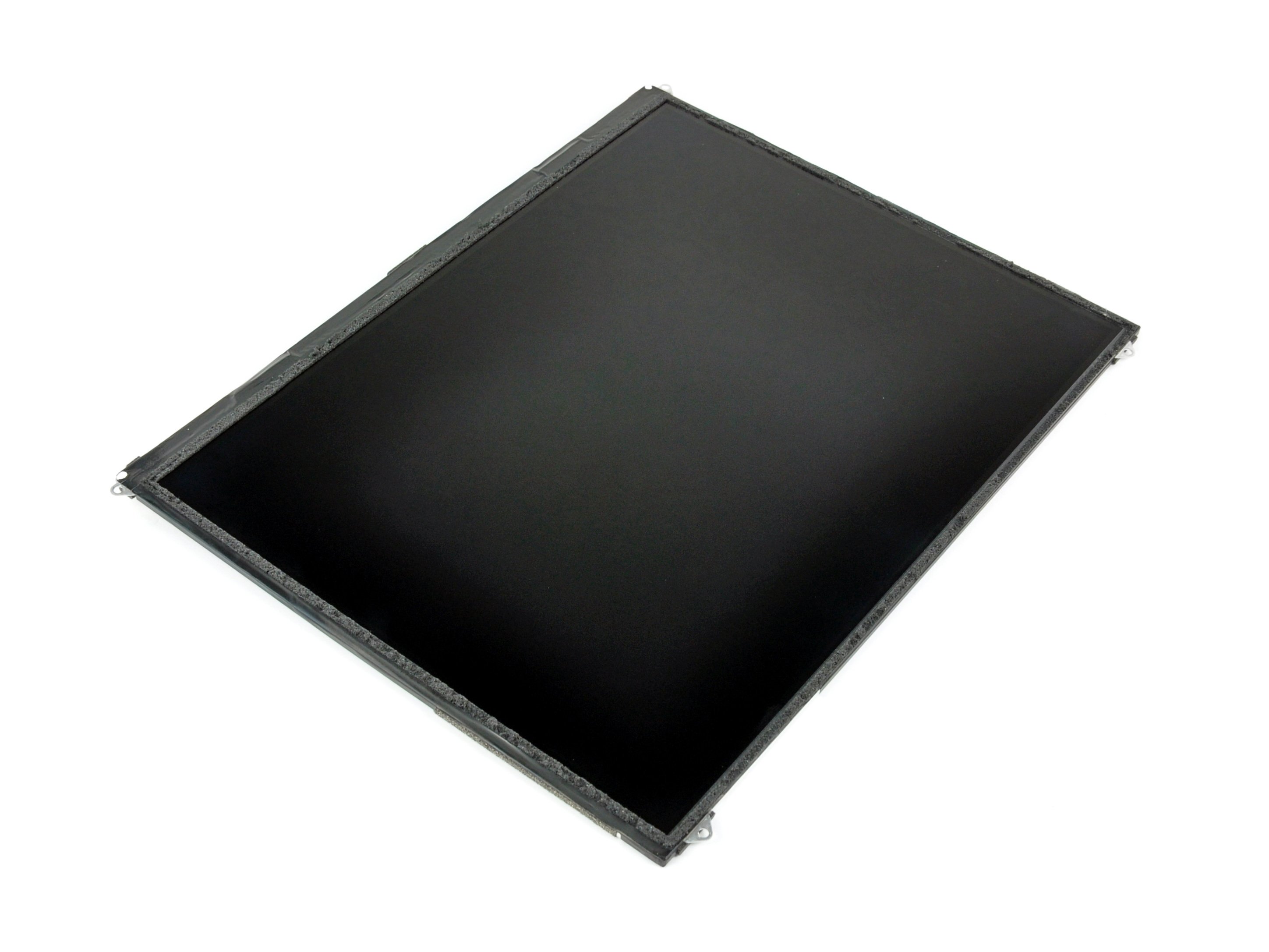iPad 2 Wi-Fi EMC 2560 Home Button Control Board Replacement
Duration: 45 minutes
Steps: 35 Steps
Follow this guide to swap out the home button control board like a pro.
Step 1
For carousel microwaves: Double-check that the plate spins without a hitch. If your iOpener gets stuck, it might overheat and cause a burn, so keep it moving!
Before diving in, it’s a good idea to give your microwave a quick clean. You don’t want any leftover crumbs or gooey mess sticking to your iOpener later on!
- Pop that iOpener right in the middle of the microwave and let it warm up a bit.
Tools Used
Step 2
Keep an eye on the iOpener and make sure it doesn’t get too hot during the repair. Overheating can lead to a dramatic burst! Aim to keep it under 100˚C (212˚F).
If the iOpener looks a bit puffed up, steer clear of it, okay?
If the center of the iOpener is still too toasty to handle, keep using it and let it chill out a bit more before you give it another heat-up. A well-heated iOpener should stay cozy for about 10 minutes.
Keep in mind that your microwave's wattage can change the heating time a bit. You'll know the iOpener is ready when it’s just shy of being too hot to handle.
- Zap the iOpener in the microwave for 30 seconds to get it nice and toasty.
- As you work, if the iOpener starts to cool off, just pop it back in the microwave for another 30 seconds to keep things warm and ready.
Tools Used
Step 3
The iOpener gets super hot, so watch out! Use an oven mitt if you're not into burning your hands.
- Carefully take the iOpener out of the microwave, grabbing it by one of the flat ends so you don’t accidentally touch the hot middle part.
Tools Used
Step 4
Heads up! The iOpener can get pretty toasty, so make sure you only grab it by the end tabs to stay safe.
No microwave? No problem! Just heat your iOpener by carefully placing it in boiling water instead.
- Grab a pot or pan and fill it with enough water to fully cover your iOpener.
- Bring the water to a boil, then turn off the heat—no need to keep it bubbling.
- Pop your iOpener into the hot water for 2-3 minutes, making sure it’s completely submerged.
- Carefully lift the iOpener out using tongs—don’t burn those fingers!
- Give it a good dry-off with a towel so it’s ready to get to work.
- When it cools down, just repeat the heating steps: boil the water, turn off the heat, and soak the iOpener for another 2-3 minutes.
Tools Used
Step 5
Put on your safety glasses to keep those peepers safe, and remember to handle the LCD screen with care – we don't want any breakups here!
This will help keep those pesky glass shards in place and make sure the display stays sturdy while you carefully pry and lift it.
- If your display glass is cracked, keep the shards in check and protect yourself by taping over the glass before you get started.
- Cover the iPad’s screen with overlapping strips of clear packing tape until the entire front is sealed.
- Try to follow the rest of the guide as usual. Just a heads-up: once the glass is broken, it might keep cracking as you work, so be ready to carefully use a metal pry tool to scoop out the glass pieces.
Step 6
You're going to be handling broken glass, so grab some safety glasses to protect your eyes from any flying bits. Safety first, right?
- Place the iOpener flat on the right edge of the iPad, making sure it’s sitting nice and snug for good contact with the iPad's surface.
- Let it rest there for about 90 seconds to warm things up before you dive into opening that front panel.
Tools Used
Step 7
Getting the tip of your opening tool wedged between the glass and plastic might take a bit of muscle—no worries though! Just stay cool, work it gently, and wiggle that tool back and forth until it slips in nicely.
- Hey there! Look closely at your iPad. There's a tiny gap in the adhesive ring, right up in the upper right corner, about 2.0 inches (~5 cm) from the top. This little weak spot is your ticket to getting inside!
- Now, let's get to work! Line up your tool with the mute button, and gently slide the tip of your trusty plastic opening tool into that gap between the front glass and the plastic bezel. Just a little nudge is all you need—enough to widen that crack and start the magic!
Step 8
- Carefully slide your tool right between the plastic display bezel and the front glass panel—getting it in just the right spot is key!
Step 9
- With the plastic opening tool snugly positioned between the front glass and plastic bezel, gently slide a plastic opening pick into the gap right alongside the tool. You're on the right track!
Step 10
- Gently pull out the plastic opening tool from the iPad, then slide the opening pick a bit deeper under the front glass—about half an inch—to keep things moving smoothly.
Step 11
- While you're gently loosening the adhesive on the right side of the iPad, take a moment to reheat the iOpener, then place it on the bottom edge of the iPad for a little extra warmth to help with the process.
Tools Used
Step 12
This adhesive is seriously tough stuff—brace yourself and apply some solid effort, but take it slow and steady!
If you catch a glimpse of the tip of the opening pick peeking out from beneath the front glass, gently pull it out just a smidge. While it’s totally fine to have the pick this deep without causing any harm, it might leave some adhesive goo on the LCD. Just a heads-up!
- While you're warming up the bottom edge with your iOpener, start working on loosening the adhesive along the right edge of the iPad.
- Gently slide the opening pick down the iPad's edge, easing the adhesive off as you go.
Tools Used
Step 13
If the iPad's been cooling off for a while while you’ve been busy, you might need to move the heated iOpener back over to the right edge to help loosen up the adhesive. Just keep an eye on the temperature and adjust as needed!
- If your opening pick is feeling a bit sticky with the adhesive, just give it a gentle roll along the side of the iPad to keep that pesky glue at bay.
Tools Used
Step 14
- Before you pop out that first opening pick from the bottom corner of your iPad, slip in a second pick right under the edge of the front glass. This little buddy will keep that sticky adhesive from getting cozy again.
- Give your iOpener another warm-up, and then place it at the top edge of the iPad. Let's keep things toasty!
Tools Used
Step 15
The Wi-Fi antenna is snugged in at the bottom right edge of the iPad’s rear case, held by screws and a cable. Since it’s positioned just so, take it slow and steady here—one wrong move and the Wi-Fi antenna might wave goodbye for good.
- Heads up: the next few steps need you to be super careful.
- You’ll need to gently free the adhesive holding the antenna to the front panel without harming the fragile parts connecting it to the bottom of the iPad. Take it slow and follow these steps closely.
Step 16
Heads up! Don’t slide the pick past the bottom right corner — that’s where the Wi-Fi antenna hangs out, and we don’t want to mess with it.
- Gently slide the opening pick around the bottom right corner of the iPad to loosen the adhesive hanging out there.
Step 17
Careful now! Glide the opening pick along the bottom right edge of the front panel. Watch out—the Wi-Fi antenna is hanging out close to the corner and could get nicked if the adhesive lets go the wrong way.
Keep the pick snugly under the front glass—just a smidge out, about 1/8" (3 mm) of the tip should still be hiding under there. You've got this!
- Gently slide the tip of your opening pick along the bottom edge of the iPad to carefully loosen the adhesive holding down the Wi-Fi antenna. Keep it smooth and steady!
Step 18
- After you’ve passed the Wi-Fi antenna area (about 3" or 75 mm from the right edge, right next to the home button), slide the opening pick all the way back in.
- Gently slide the pick to the right to loosen the adhesive holding the Wi-Fi antenna to the front glass.
- The antenna is screwed and cabled to the bottom of the iPad. This step frees it from the front panel so you can remove the panel without damaging the antenna.
Step 19
Keep it cool, friend! Don't let that iOpener sizzle for more than a minute at a time, and give it a break of at least two minutes before you heat it up again. Your device will thank you!
If the adhesive has cooled down too much along the bottom edge, give your iOpener a little heat-up session to warm things up where you're working. Keep it cozy!
- Keep gently peeling away the adhesive at the bottom of your iPad, making sure to pull the opening pick out far enough to wrap around the home button. Once you’ve navigated past the home button, reinsert that pick about 1/2 inch (10 mm) deep for a smooth sailing experience.
Tools Used
Step 20
When working on iPad 4 models, slide your pick in no deeper than 1/2 inch (10 mm) right here—this keeps the home button ribbon cable safe and sound!
- Keep peeling away that adhesive all the way across the bottom edge of the iPad. You're doing great!
- Slide the opening pick in and leave it snugly under the front glass by the home button. You're almost there!
Step 21
- Pop the iOpener back in the microwave to heat it up again, then place it on the left edge of the iPad to gently warm up the adhesive in that area.
Tools Used
Step 22
If the adhesive has gotten a bit too cool, no worries! Just swap out the iOpener along the top edge and keep at it. If the iOpener itself is feeling a little chilly, give it a quick reheat and you'll be back on track in no time!
- Gently slide your opening pick along the top edge of the iPad, easing it out just enough to get around the front-facing camera bracket.
- Heads up: the adhesive here is super stubborn, so you might need to apply a bit of muscle. Take it slow and steady to avoid any slips or scrapes on you or your iPad.
- If your pick starts to get stuck in the glue, try giving it a little 'roll' as demonstrated in step 9 to keep things moving smoothly.
Tools Used
Step 23
If the adhesive is nice and warm, feel free to take the iOpener off the iPad for easier handling. But if it's still pretty sticky, no worries—just give the iOpener another quick heat-up and place it on the left edge while you get to work.
- Keep peeling back the adhesive along the top edge of the iPad, then carefully slide your opening pick around the top left corner like a pro.
Tools Used
Step 24
Heads up! The digitizer cable hangs out about 2" (50 mm) from the bottom edge of your iPad. When sliding your pick, ease off once you hit around 2.25" (60 mm) from the bottom to keep everything safe and sound.
- Gently glide the opening pick down the left edge of the iPad, letting the adhesive loosen as you go. The adhesive here is pretty thin, thanks to the digitizer stretching along the entire left side. Just be careful not to go too deep—stick to a maximum of 1/2 inch (10 mm) to keep that digitizer safe and sound.
Step 25
Heads up! The bottom of the digitizer cable is just about an inch (25 mm) from the bottom of the iPad. Take it slow and steady — you definitely don’t want to accidentally snip this little guy.
- Carefully slide the opening pick that’s still tucked under the bottom edge of the iPad to gently break the adhesive seal at the bottom left corner.
Step 26
Sometimes the adhesive around the edge of the iPad likes to stick back down. If that happens, carefully slide a pick under the edge where the front glass is still holding tight, and gently 'cut' through the adhesive to free it up.
- Grab one of your trusty opening picks and gently pop up the bottom right corner of the iPad, then grab it with your fingers to start the adventure!
Step 27
Watch out for any leftover sticky stuff that might still be clinging on! Grab an opening pick and gently slice through any adhesive that’s keeping that front panel in place.
- Grab the iPad by the top and bottom right corners and gently swivel the front glass away from the device.
- When putting everything back together, give the LCD a quick wipe with a microfiber cloth and a blast of compressed air to clear off any dust or smudges before snapping the glass back in place.
Step 28
- Unscrew those four 2.0 mm Phillips screws that are holding the LCD snugly against the rear case. You've got this!
Step 29
Handle the LCD with care while lifting it—you’re not detaching it just yet since its display data cable is still hanging out, connected as you gently flip it over.
To get to the front panel ribbon cables, you’ll need to gently lift the LCD out of the way for a moment. They’re hiding just beneath it, waiting for you to give them some attention!
- Carefully lift the LCD from the long edge nearest the volume buttons and gently flip it open like you’re turning a page in a book.
- Place the LCD face down on the front panel to keep it safe while you work.
Step 30
Make sure you're prying up on the hinged retaining flaps, not the sockets themselves—handle with care!
Check out the second picture where the retaining flaps are marked in red to guide your way.
- Gently use the edge of a plastic opening tool to lift up the retaining flaps on the two digitizer ribbon cable ZIF sockets. Take your time and be careful, you've got this!
Step 31
- Gently slide the edge of a plastic opening tool under the digitizer cable to lift it off the shields on the logic board.
- Slowly peel the digitizer cable away from the adhesive holding it to the side of the rear case.
Step 32
- Gently tug the digitizer ribbon cable straight out from its snug little homes on the logic board.
Step 33
Take it easy when handling the LCD! Don't try to completely detach it from the iPad—its cable will stay attached as you gently rotate it over.
To detach the front panel assembly, you'll need to gently wiggle the ribbon cable free from the snug spot between the case and the LCD. Just give the LCD a little nudge to create some space, and you'll be on your way!
- Gently lift the LCD from the edge that's farthest from the digitizer cable and smoothly flip it towards the back case, just like you're closing a book.
- While you're holding the LCD up, carefully slide the front panel away from the iPad. Watch out for that digitizer cable—let's not get it caught on the rear case or LCD.
- Place the LCD back into the body for safekeeping until you're ready for the next step.
Step 34
- Unscrew the two 2.1 mm Phillips #00 screws holding the home button control board onto the home button assembly. Keep them safe—you’ll need them later!
Step 35
- Time to put your device back together! Just retrace your steps and use our iPad 2 Wi-Fi EMC 2560 Front Panel Adhesive strips guide to secure that front panel like a pro. If you run into any bumps along the way, don’t hesitate to schedule a repair for some expert help!
























